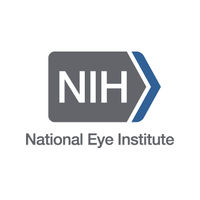|
|
Active Org.- |
|
Active Indication- |
|
Drug Highest PhasePending |
First Approval Ctry. / Loc.- |
First Approval Date20 Jan 1800 |
A Phase I Unmasked Study to Investigate the Safety and Tolerability of Subconjunctival Injections of Palomid 529 in Patients With Neovascular Age-Related Macular Degeneration
Background:
Wet age-related macular degeneration (AMD) occurs when abnormal blood vessels grow in the back of the eye, and leak blood and other fluids that damage the eye, produce scarring, and lead to blindness. People diagnosed with wet AMD have increased production of a body chemical called vascular endothelial growth factor (VEGF). VEGF is important in the formation of blood vessels in the body, and decreasing the production of VEGF is believed to help wet AMD patients by preventing or slowing the growth of the abnormal blood vessels. Anti-VEGF drugs have been used to decrease the production of VEGF, but some people do not respond completely to these drugs.
A protein in the body called mTOR also plays a critical role in regulating how cells divide and grow and obtain their blood supply. The experimental chemical Palomid 529 inhibits the production of mTOR. Researchers are interested in determining whether Palomid 529 is safe and can help individuals with wet AMD who have not completely responded to anti-VEGF treatments.
Objectives:
- To evaluate the safety and effectiveness of Palomid 529 as a treatment for wet age-related macular degeneration in individuals who have not responded to standard anti-VEGF treatments.
Eligibility:
- Individuals with wet age-related macular degeneration in at least one eye that has not responded to standard anti-VEGF treatments.
Design:
Prior to the first visit, participants should have been seen at the National Eye Institute clinic under a screening or teaching protocol, or NIH protocol 08-EI-0103, High Speed Indocyanine Green Angiography Findings in Induction Regimen of Intravitreal Ranibizumab Injection for Neovascular Age Related Macular Degeneration. One eye will be designated as the study eye to receive the Palomid 529 treatment.
Participants will have a full physical examination and medical history, a full eye examination to evaluate eye health and vision, angiography to examine the blood vessels in the eyes, and blood and urine tests during the study
Participants will receive an injection of Palomid 529 into the study eye every 4 weeks during the study, for a total of three injections. Participants may also receive anti-VEGF injections such as ranibizumab (Lucentis ) or bevacizumab (Avastin ) in the study eye 12 days before and 12 days after the Palomid 529 injection.
Participants may have standard-of-care treatments for the non-study eye if it has wet AMD as well, but may not receive experimental treatments in the non-study eye while they are in this study.
Participants will return for long-term follow-up examinations as directed by the study researchers.
A Phase I Open-Label Study to Investigate the Safety, Tolerability and Pharmacokinetic Profile of Single Intravitreal and Subconjunctival Doses of Palomid 529 in Patients With Advanced Neovascular Age-Related Macular Degeneration (AMD)
Palomid 529 is a dual TORC1/2 inhibitor of the PI3K/Akt/mTOR pathway having broad activity in angiogenesis and cellular proliferation. Palomid 529 will be examined to determine if the safety, tolerability and pharmacokinetic profile of single ascending doses when administered intravitreally or subconjunctivally.
100 Clinical Results associated with Class I PI3K x mTORC1 x Akt-1 x VEGF-A x HIF-1α x mTORC2
100 Translational Medicine associated with Class I PI3K x mTORC1 x Akt-1 x VEGF-A x HIF-1α x mTORC2
0 Patents (Medical) associated with Class I PI3K x mTORC1 x Akt-1 x VEGF-A x HIF-1α x mTORC2



